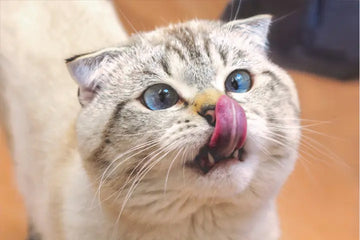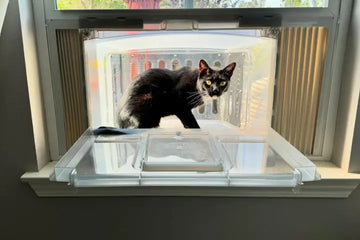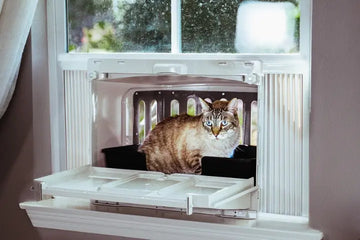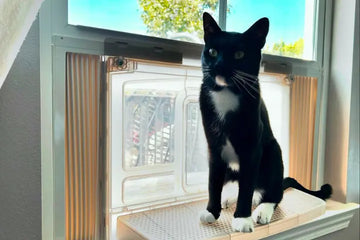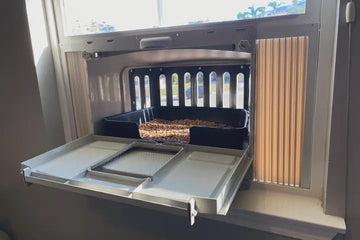Indoor cats, unlike their outdoor counterparts, face different challenges, mainly the lack of natural stimuli that are abundant in an outdoor setting. This shortcoming can lead to a range of issues, from boredom to behavioral problems. Thus, creating an enriching indoor cat life is not just a luxury, but a necessity. It involves designing an environment that stimulates their instincts, keeps them physically active, and mentally engaged. By understanding and catering to the unique needs of indoor cats, we can ensure they lead a happy and fulfilling life within the confines of our homes.
Understanding Indoor Cat Behavior and Needs
The Psychology of Indoor Cats
Grasping the psychology of indoor cats is the first step towards creating an environment that caters to their needs. Indoor cats have the same instincts as their outdoor counterparts - the need to hunt, explore, and establish territory. However, the confined space of a home can limit their ability to express these natural behaviors. This can lead to frustration and boredom, which often manifests in destructive or unwanted behaviors. By understanding these innate needs, cat owners can develop strategies to simulate a more natural and stimulating environment within the home.
Mental and physical stimulation is crucial in maintaining the health and happiness of indoor cats. A lack of stimulation can lead to a range of issues, including obesity, lethargy, and behavioral problems. Engaging in activities and environments that challenge their minds and bodies is essential for their well-being. This includes providing opportunities for climbing, exploring, and playing, which not only keeps them fit but also mentally sharp and engaged.
Recognizing Signs of Boredom in Indoor Cats
Recognizing these signs is key to addressing their needs effectively. Common indicators include excessive grooming, overeating, lethargy, or a lack of interest in activities they once enjoyed. Other signs might include aggression, excessive meowing, or destructive behaviors like scratching furniture. Observing these behaviors can help cat owners identify the need for more stimulating activities or changes in their environment.
Designing Play Areas for Indoor Cats
Key Elements of an Engaging Play Area
When it comes to designing play areas for indoor cats, there are several key elements to include for maximum engagement. First, the area should offer a variety of activities that cater to a cat’s instincts - climbing, hiding, scratching, and hunting. Scratching posts are crucial for nail health and stress relief. Additionally, incorporating interactive elements like moving toys can stimulate their hunting instincts.
Creative DIY Play Area Ideas
Creating a DIY play area for your cat is not only an engaging project but also a wonderful way to provide your feline friend with a stimulating environment. Here are some creative ideas for DIY play areas:
- Wall-Mounted Shelves: Transform a simple wall into a climbing paradise for your cat by installing shelves at various heights. Ensure the shelves are sturdy and spaced in a way that your cat can safely jump from one to another. You can also add soft mats or beds on some shelves for resting spots.
- Cardboard Box Maze: Utilize readily available cardboard boxes to create an intriguing maze. This can include different entry and exit points, tunnels, and hiding spots, offering your cat a fun and interactive play area. It's a cost-effective way to stimulate their natural hunting and exploring instincts, and you can rearrange the boxes periodically to maintain their interest.
- Homemade Scratching Posts: Creating custom scratching posts using sisal rope and wood can be a satisfying DIY project. These homemade posts can be tailored to your cat's size and scratching preferences, and placed in areas where they spend a lot of time.
- Interactive Puzzle Feeders: Repurpose household items to create puzzle feeders that mentally challenge your cat. This could involve hiding treats in containers that require manipulation to open or creating obstacle courses for food. Such feeders encourage natural foraging behavior and can help slow down fast eaters.
- Window Perch: Set up a comfortable perch near a window to allow your cat to enjoy bird-watching and sunbathing. This can be as simple as a cushioned shelf or a hammock attached to the window sill. It’s an excellent way for indoor cats to experience the outdoors safely.
- Hanging Toys: Suspend a variety of safe toys from the ceiling for your cat to bat, chase, and leap at. Ensure that these toys are securely fastened and do not pose a choking hazard.
A DIY play area offers a unique and personalized way to cater to your cat's needs and preferences. These ideas not only enhance your cat's physical and mental well-being but also strengthen the bond between you and your pet through interactive play and shared experiences.
Creating Stimulating Indoor Cat Habitats
Incorporating Vertical and Horizontal Elements
As stated before, cats naturally love to climb and explore different heights, so adding vertical structures like tall cat trees, shelves, or wall-mounted perches, can significantly enhance their environment. Equally important are horizontal spaces where they can stretch out, scratch, and play. These can include floor-based tunnels, mats for scratching, or low-level hideaways. This combination allows cats to fully express their natural behaviors and preferences, keeping them engaged and content.
Using Texture and Sound for Sensory Stimulation
Cats have sensitive paws and enjoy exploring different surfaces, so incorporating a variety of textures like rugs, sisal, and soft fabrics can be very stimulating. Sound can also be used to engage a cat's interest. Toys that mimic the sounds of prey, such as chirping or rustling, can provide mental stimulation and encourage playful behavior. Even playing soft, nature-inspired sounds can create a more enriching environment for indoor cats.
The Role of Hideaways and Resting Areas
Hideaways and resting areas are essential components of a stimulating cat habitat. Cats need a safe and quiet place to retreat, relax, and observe their surroundings. This can be achieved by providing cozy beds, hammocks, or enclosed spaces like cat condos. These areas should be placed in quieter parts of the home, where the cat can have privacy and peace. Providing these types of restful spaces helps in balancing their active play with necessary downtime, contributing to their overall well-being.
Integrating Natural Elements Indoors
This can include adding cat-friendly plants that they can sniff and nibble or creating a small indoor garden area where they can dig and explore. Sunlight is also a natural element that is highly beneficial; ensuring access to sunny spots where cats can bask can significantly improve their mood and health. These natural elements not only stimulate their senses but also provide a connection to the outdoor environment they instinctively crave.
Techniques for Indoor Cat Mental Stimulation
The Benefits of Regular Play Sessions
Regular play sessions are an essential part of a cat's daily routine, offering numerous benefits that contribute to their overall well-being. Engaging in playful activities is not just about entertainment; it plays a crucial role in maintaining physical health, mental sharpness, and emotional stability. Here are some of the key benefits:
- Enhances Physical Health: Regular play is instrumental in maintaining a cat's healthy weight and improving cardiovascular health. It provides a form of exercise that helps prevent obesity, a common problem in indoor cats.
- Strengthens Bonds: Playtime is a golden opportunity for bonding between a cat and its owner. It builds trust and affection, as cats associate their owners with the positive experiences of play. This shared activity strengthens the emotional connection and enhances the mutual relationship, creating a deeper sense of companionship.
- Reduces Behavior Problems: Cats that receive regular stimulation through play are less likely to develop behavioral issues related to boredom or frustration. Engaging in play satisfies their instincts, reduces potential destructiveness, and keeps them from engaging in unwanted behaviors.
- Improves Agility and Coordination: Active play enhances a cat's physical agility and coordination. Movements involved in play, such as jumping, pouncing, and balancing, are crucial for a cat's physical development. Regular play helps refine these skills.
- Relieves Stress: Just like in humans, play can be an effective stress reliever for cats. As mentioned previously, this provides an outlet for releasing pent-up energy and helps alleviate anxiety and stress. Play sessions can be particularly beneficial for cats that show signs of anxiety or those living in a high-stress environment.
Regular play sessions are not just a source of fun for cats, but a vital aspect of their daily lives. They offer a range of benefits that contribute to a cat's physical, mental, and emotional health. Engaging in regular play with your cat is an investment in their well-being and strengthens the bond you share, making it a rewarding experience for both the cat and the owner.
Outdoor Cat Enclosures: Catios and Window Boxes
Benefits of a Catio for Cats
Introducing a catio window box to an indoor cat's environment can significantly enhance their quality of life. A catio, which is a secure outdoor enclosure, provides cats with the opportunity to experience the outdoors safely. The benefits are manifold – it offers fresh air, sunlight, and exposure to natural sights and sounds, which are essential for sensory stimulation. A catio also allows cats to indulge in their instinctual behaviors like climbing, exploring, and bird watching, all while remaining protected from outdoor dangers.
Implementing a Cat Window Box in Urban Settings
For cat owners in urban settings or with limited space, a window catio is an ideal solution. This smaller version of a catio can be attached directly to a window, providing cats with a safe way to enjoy the outdoors. It's important to ensure the cat window box is securely installed and made from durable materials. Including a cozy bed or cushion in the box can make it more inviting for your cat, turning it into a perfect spot for lounging.
The ultimate goal of these efforts is to ensure a happy, healthy lifestyle for indoor cats. By implementing these strategies, cat owners can provide an environment that not only meets but exceeds their cat's needs. This leads to a more harmonious coexistence, where cats are not only physically healthy but also mentally stimulated and emotionally satisfied. Remember, a stimulated cat is a happy cat, and the effort put into creating such an environment reflects the love and care you have for your feline companion.



